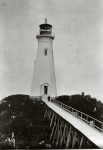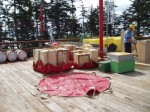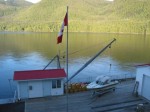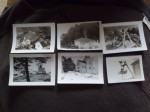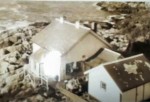Light at the End of the World
Three Months on Cape St. James, 1941
by Hallvard Dahlie (orig from Raincoast 18, 1998) with notes from Jim Derham-Reid (last keeper on Cape St. James before automation)
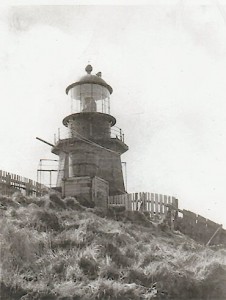 A strange interlude in my brief seafaring life took place in the fall of 1941, when I signed on as assistant lighthouse keeper at Cape St. James, a light perched on top of a three-hundred-foot rock at the very southern tip of the Queen Charlotte Islands. I had quit school earlier that year, at the age of sixteen, and found a job on the CGS Alberni, a lighthouse tender operating out of Prince Rupert. But when she had to go into dry dock at the beginning of September for a new wartime grey paint job and a bit of refurbishing, I chose to take a stint out at the lighthouse rather than scrape barnacles and paint for three months. Continue reading Light at the End of the World
A strange interlude in my brief seafaring life took place in the fall of 1941, when I signed on as assistant lighthouse keeper at Cape St. James, a light perched on top of a three-hundred-foot rock at the very southern tip of the Queen Charlotte Islands. I had quit school earlier that year, at the age of sixteen, and found a job on the CGS Alberni, a lighthouse tender operating out of Prince Rupert. But when she had to go into dry dock at the beginning of September for a new wartime grey paint job and a bit of refurbishing, I chose to take a stint out at the lighthouse rather than scrape barnacles and paint for three months. Continue reading Light at the End of the World




